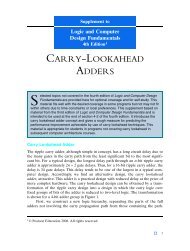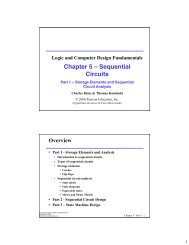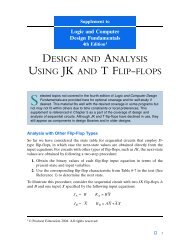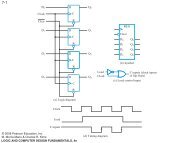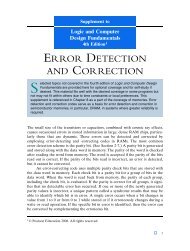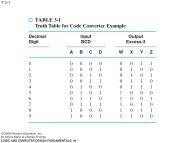Chapter 5 â Sequential Circuits
Chapter 5 â Sequential Circuits
Chapter 5 â Sequential Circuits
You also want an ePaper? Increase the reach of your titles
YUMPU automatically turns print PDFs into web optimized ePapers that Google loves.
Other Flip-Flop Types<br />
• J-K and T flip-flops<br />
• Behavior<br />
• Implementation<br />
• Basic descriptors for understanding and<br />
using different flip-flop types<br />
• Characteristic tables<br />
• Characteristic equations<br />
• Excitation tables<br />
• For actual use, see Reading Supplement - Design<br />
and Analysis Using J-K and T Flip-Flops<br />
<strong>Chapter</strong> 5 - Part 2 39<br />
J-K Flip-flop<br />
• Behavior<br />
• Same as S-R flip-flop with J analogous to S and K<br />
analogous to R<br />
• Except that J = K = 1 is allowed, and<br />
• For J = K = 1, the flip-flop changes to the opposite<br />
state<br />
• As a master-slave, has same “1s catching” behavior<br />
as S-R flip-flop<br />
• If the master changes to the wrong state, that state<br />
will be passed to the slave<br />
• E.g., if master falsely set by J = 1, K = 1 cannot reset it<br />
during the current clock cycle<br />
<strong>Chapter</strong> 5 - Part 2 40<br />
20



